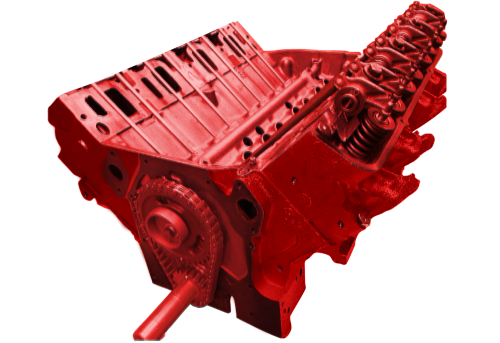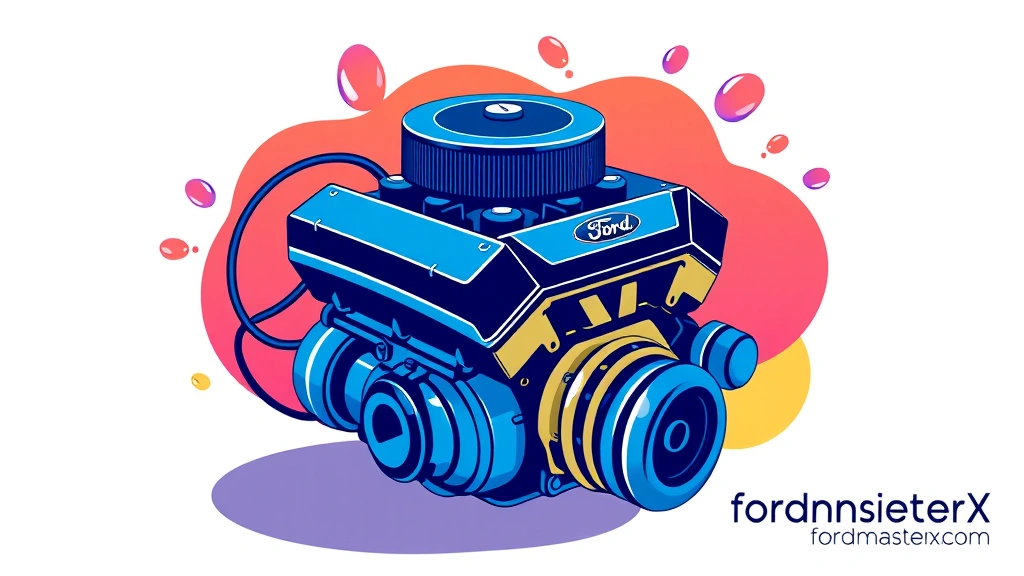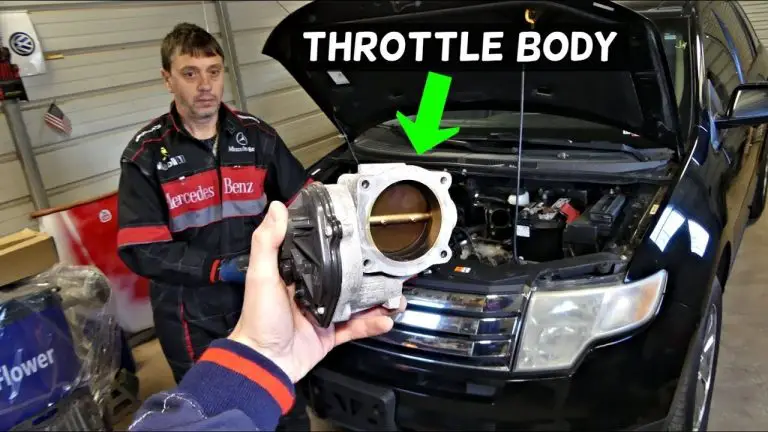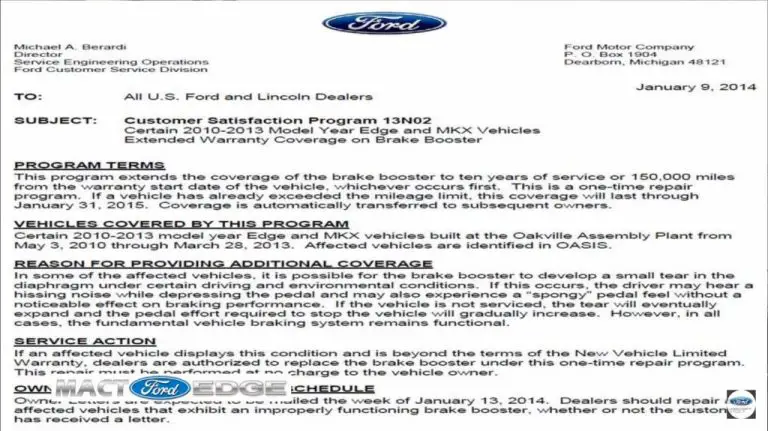Ford 390 Engine: Liters & Specs Explained
Key Takeaways
- The Ford 390 cubic inch engine translates to approximately 6.4 liters.
- This engine was a popular choice in various Ford and Mercury vehicles from 1961 to 1976.
- Understanding the cubic inch to liter conversion is crucial for car enthusiasts and mechanics.
- The 390 had a significant impact on American muscle cars and everyday drivers.
- Its design allowed for different power outputs, from daily driving to performance.
You've probably heard enthusiasts toss around engine sizes like "390" or "427" and wondered, "What does that even mean in today's terms?" Especially if you’re looking at classic American iron, those cubic inch displacements can feel a bit old-school. But hey, that's part of the charm, right? So, let's dive straight into one of those iconic numbers: the Ford 390.
Unpacking the Ford 390: Cubic Inches to Liters
When we talk about a Ford 390, we're referring to its displacement in cubic inches. This is a traditional American way of measuring the total volume swept by all the pistons in an engine's cylinders. Think of it as how much air and fuel the engine can gulp down with each full rotation.
The Conversion: From Cubic Inches to Liters
Now, if you're like most folks today, you're probably more familiar with liters, especially with modern cars. So, how many liters is a Ford 390?
One cubic inch is roughly equivalent to 0.0163871 liters. To convert 390 cubic inches to liters, you simply multiply:
390 cubic inches * 0.0163871 liters/cubic inch = 6.390969 liters.
So, a Ford 390 cubic inch engine is approximately a 6.4-liter engine. Pretty straightforward, right? It's a big engine by today's standards, definitely in the "large displacement" category.
Why the 390 Was a Big Deal
The Ford 390 wasn't just a number; it was a workhorse and a performance king for its time. Introduced in 1961, it was part of Ford's FE (Ford-Edsel) engine family. This family of engines was known for its robust design and versatility.
It powered everything from full-size sedans and station wagons to the legendary Mustang, Fairlane, and Thunderbird. This engine was a common sight on American roads for over a decade. Its presence under the hood often signaled a car with some serious grunt.
The Legacy and Variations of the 390
The 390 wasn't a one-trick pony. Ford produced several versions of this engine, catering to different needs and performance levels. This adaptability is part of what made it so popular.
Different Flavors of the 390
You could find a 390 in a mild, everyday tune or a high-performance version ready for the drag strip. The differences often came down to carburetor setups (two-barrel vs. four-barrel), camshaft profiles, compression ratios, and exhaust manifolds.
For example, a two-barrel carburetor 390 in a family sedan might have produced around 250 horsepower. Meanwhile, a high-performance four-barrel version in a Mustang GT or a Thunderbird could easily push upwards of 330 horsepower. And some even higher!
Common Vehicles Featuring the 390
The 390 found a home in a wide array of Ford and Mercury vehicles. If you're a classic car enthusiast, you've definitely seen it.
Here's a look at some of the vehicles where you might find a 390:

| Vehicle Model | Years Produced (with 390) | Common Applications |
|---|---|---|
| Ford Galaxie | 1961-1971 | Full-size family car |
| Ford Thunderbird | 1961-1971 | Personal luxury car |
| Ford Mustang | 1967-1969 | Muscle car, performance |
| Ford Fairlane/Torino | 1966-1970 | Mid-size performance |
| Ford F-Series Trucks | 1968-1976 | Light and medium-duty |
| Mercury Monterey | 1961-1971 | Full-size luxury |
| Mercury Cougar | 1967-1969 | Pony car, performance |
This table really highlights the versatility of the 390. From luxury cruisers to raw muscle, it handled it all.
Understanding Engine Displacement: Why It Matters
So, why do car manufacturers measure engine size in different ways? And why should you care? It really comes down to historical context and what information is most useful for different audiences.
Cubic Inches vs. Liters: A Cultural Divide
In the United States, cubic inches were the standard for decades, especially during the muscle car era. It was just how things were done. You'd hear "big block" and "small block" and then the displacement in cubic inches.
Globally, and increasingly in the U.S. since the 1980s, liters became the more common unit. It's part of the metric system, which is used by most of the world. For modern vehicles, you'll almost always see displacement listed in liters.
What Displacement Tells You
Engine displacement, whether in cubic inches or liters, gives you a general idea of an engine's potential power and torque. Generally speaking, a larger displacement engine can produce more power. It can move more air and fuel.
However, it's not the only factor. Technology plays a huge role. A modern 2.0-liter turbocharged engine can often outperform an older, larger displacement V8 in terms of horsepower and fuel efficiency. But there's just something about the rumble of a big V8, isn't there?
The Ford 390's Place in History

The 390 holds a special place in American automotive history. It was a bridge between the early days of V8 power and the peak of the muscle car era. Its presence in so many iconic vehicles cemented its legacy.
Muscle Car Icon
When you think of a 1967 Mustang GT, the 390 is often the engine that comes to mind. Steve McQueen's Mustang in Bullitt famously featured a 390. That car chase scene? Pure magic, and the sound of that engine was a huge part of it.
Reliability and Durability
Beyond performance, the FE engine family, including the 390, was known for its robust construction. These engines were built to last. Many 390s are still running strong today, a testament to their original design and build quality.
Finding parts for a 390 today isn't overly difficult either, thanks to a healthy aftermarket. This makes them a popular choice for classic car restorations and hot rod projects.
The End of an Era
By the mid-1970s, changing emissions regulations and the oil crisis led to a shift away from large displacement engines. Ford phased out the FE series, including the 390, in favor of more fuel-efficient designs. But its impact was undeniable. It helped define an era of American motoring.
Maintaining Your Ford 390: Tips for Enthusiasts
If you're lucky enough to own a classic Ford with a 390, you know these engines are special. Keeping them running smoothly requires a little love and attention, but it's totally worth it.
Essential Maintenance Tips

- Regular Oil Changes: Use a high-quality oil, preferably one designed for older engines with flat tappet camshafts. These oils often contain higher levels of ZDDP (zinc dialkyldithiophosphate) to protect the cam.
- Check Cooling System: Overheating is an engine killer. Ensure your radiator is clean, hoses are in good shape, and the thermostat is working correctly.
- Ignition System: Points and condenser (if not converted to electronic ignition) need regular inspection. Spark plugs, wires, and the distributor cap should be checked and replaced as needed.
- Fuel System: Older carburetors can be finicky. Keep your fuel filter clean and consider rebuilding the carburetor if you're experiencing issues. Ethanol in modern fuel can also be a problem for older fuel lines and gaskets.
- Listen to Your Engine: Any new noises, smells, or changes in performance should be investigated promptly. These engines are generally robust, but early detection of problems can save you a lot of headaches.
Upgrades and Modifications
Many enthusiasts enjoy upgrading their 390s. Common modifications include:
- Electronic Ignition Conversion: Replaces points and condenser for more reliable spark.
- Aftermarket Intake Manifolds and Carburetors: Can significantly improve airflow and horsepower.
- Performance Camshafts: Changes valve timing for more power at higher RPMs.
- Exhaust Systems: Headers and dual exhausts can free up horsepower and give a great sound.
Remember, any modifications should be done carefully and ideally by someone familiar with these engines. The goal is to enhance performance without compromising reliability.
Frequently Asked Questions (FAQs)
Q1: How many horsepower did a stock Ford 390 typically have?
A1: The horsepower output of a stock Ford 390 varied significantly depending on the year, application, and specific tune. For instance, a two-barrel carburetor version in a full-size sedan might have produced around 250-265 horsepower, while a high-performance four-barrel version in a Mustang GT could deliver 320-335 horsepower. Some special high-output versions were even rated higher.
Q2: Is the Ford 390 a big block or small block engine?
A2: The Ford 390 cubic inch engine is considered a big block engine. It's part of Ford's FE (Ford-Edsel) engine family, which are all classified as big blocks due to their physical size and design, even if their displacement wasn't always the largest.
Q3: What is the difference between a Ford 390 and a 428?
A3: Both the 390 and 428 are part of the Ford FE engine family. The primary difference is their displacement: the 390 is 390 cubic inches (approx. 6.4 liters), while the 428 is 428 cubic inches (approx. 7.0 liters). The 428 achieved its larger displacement through a larger bore and/or stroke compared to the 390. The 428 was often used in more performance-oriented applications like the Cobra Jet.
Q4: Are parts readily available for a Ford 390 engine?
A4: Yes, parts for the Ford 390 engine are generally readily available. Thanks to a strong aftermarket and a dedicated community of classic Ford enthusiasts, you can find almost anything you need, from rebuild kits and internal components to performance upgrades and external accessories.
Q5: Can I put a modern transmission on a Ford 390 engine?
A5: Yes, it is possible to adapt a modern transmission to a Ford 390 engine, but it typically requires an adapter plate. Many enthusiasts convert to modern automatic overdrive transmissions (like a 4R70W or AOD) or modern manual transmissions for better fuel economy and drivability. This usually involves research and potentially custom fabrication or specialized kits.
Wrapping It Up: The Enduring Appeal of the 390
So, there you have it. The Ford 390 cubic inch engine, a true legend of American automotive engineering, translates to approximately 6.4 liters. It's a testament to an era when engines were measured by their raw volume and often their raw power. This engine wasn't just a component; it was a character in the story of American cars.
Whether you're a seasoned gearhead or just starting your journey into the world of classic cars, understanding the 390's place in history helps you appreciate the vehicles it powered. Its legacy lives on in the rumble of restored muscle cars and the fond memories of those who experienced it new. So, next time you hear "390," you'll know exactly what kind of beast they're talking about! Got a favorite memory or story about a 390? Drop a comment below!








